Types of Belts Every Man Should Know (and Actually Wear)
Most guys think a belt’s just there to keep their trousers from making a slow, humiliating descent. Fair enough. But choosing the right one, and you go from “yeah, he’s dressed” to “okay… this man gets it.”
When you’ve spent enough time paying attention to the different types of belts—and I mean really noticing the details—it changes how you see an outfit. You start spotting those small choices that either make the look sing or make it… awkward. And trust me, I’ve seen more than my share of both.
Think of it like shoes. You wouldn’t throw on muddy sneakers with a tux (well, hopefully). Same logic applies here: a rugged work belt has its place, a sleek leather dress belt has a different one entirely, and a woven fabric belt is its own beast altogether. Each type serves a purpose, and knowing when to reach for which is exactly what separates a man who’s dressed well from one who’s just dressed.
Contents
📦 Found This Gem Today
JUKMO Reversible Ratchet Belt – Finally, One Belt That Does It All
Tired of belts that never fit quite right? This clever ratchet system clicks into the perfect spot every time. Plus it's reversible – so you're basically getting two belts for the price of one.
⭐ 4.7/5 stars – 60+ happy customers
Just $19.98 (seriously good deal)
👉 Check It Out8 Types of Belts
1. Dress Belts
Among all types of belts, the dress belt is where serious menswear truly begins. Sleek. Minimal. Confident without shouting. It’s usually a slim strip of leather—somewhere in the 1 to 1.25-inch range—that somehow looks solid without feeling heavy-handed.
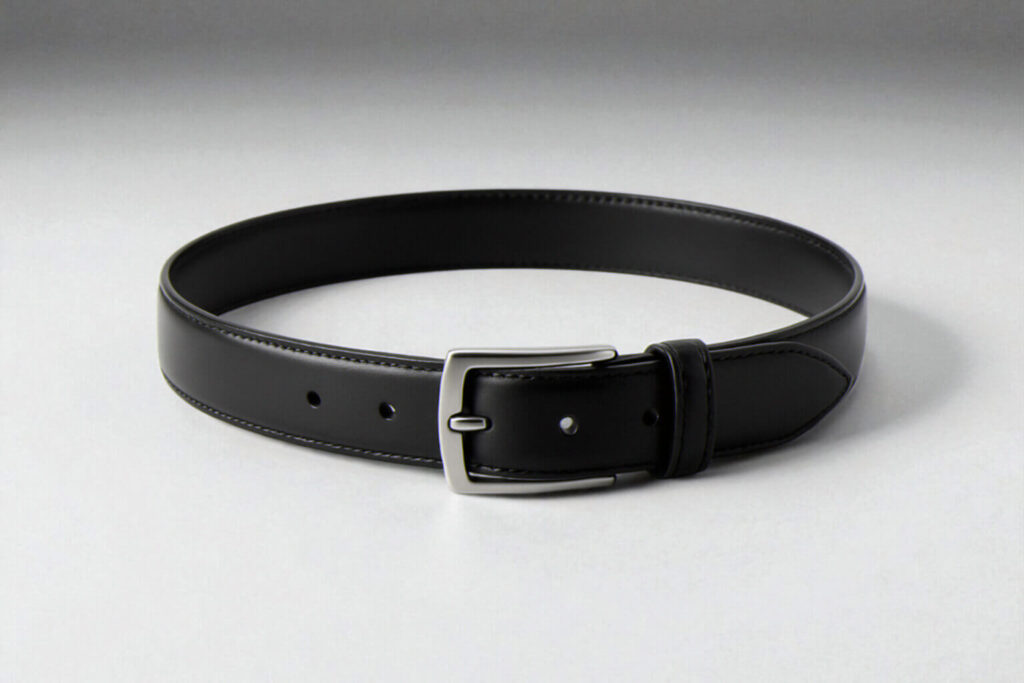
The best dress belts carry themselves with quiet authority. Full-grain calfskin is a classic choice, paired with a refined buckle that’s elegant but not screaming for attention. Black leather? That’s your wingman for charcoal, navy, or black suits. A rich brown? Perfect for just about everything else on the formal spectrum.
One thing about high-quality dress belts—they age beautifully. Leather develops a patina that feels earned, not manufactured, adding depth and character over the years.
Recommended Pick: The Allen Edmonds Manistee Belt delivers that classic dress belt excellence. Vegetable-tanned Leather construction, refined buckle, and the kind of craftsmanship that improves with age. Available in both black and brown—grab both if your budget allows.
2. Casual Leather Belts
If a dress belt is the sharp suit of the belt world, a casual leather belt is your favorite well-fitting pair of jeans—reliable, versatile, and ready for almost anything. They’re usually a touch wider (1.25 to 1.5 inches), with sturdier leather, visible stitching, and a bit more personality.
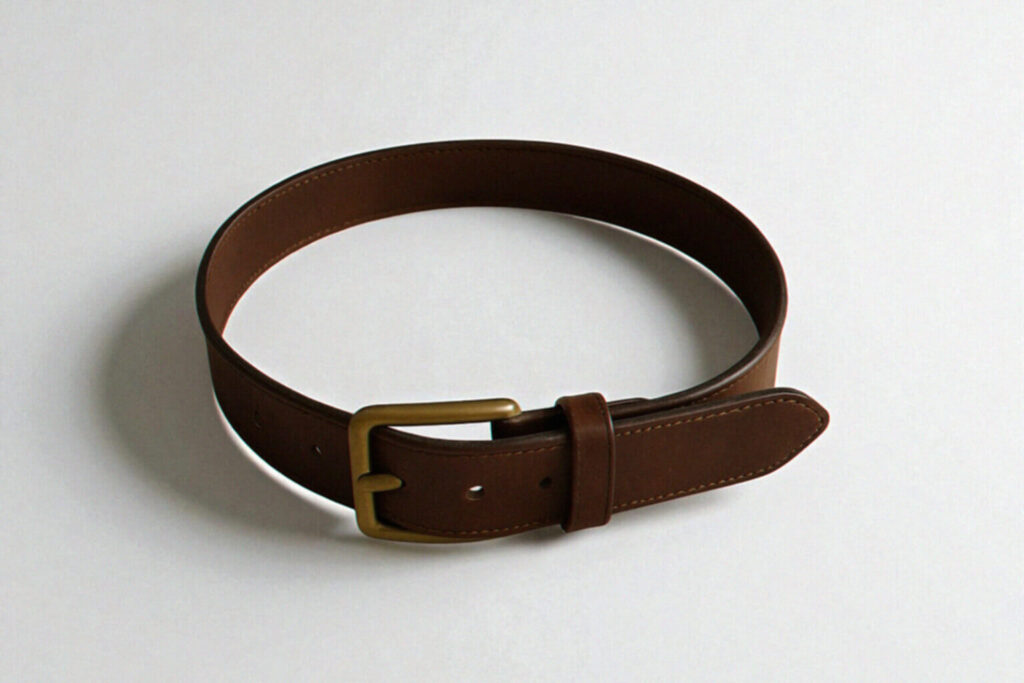
These are the belts that bridge the gap between laid-back and polished. Pair them with chinos, jeans, or even dress pants if your office skews relaxed. That warm, medium brown is the MVP—equally at home with weekend barbecue outfits, dark jeans for a night out, or a smart-casual Friday look.
Recommended Pick: The Timberland Men’s Classic Leather Belt hits the sweet spot for casual versatility. Quality full-grain leather, sturdy construction, and that perfect medium brown that works with everything. The kind of belt that gets better-looking the more you wear it.
3. Suede Belts
Suede belts sit comfortably between casual and refined—offering texture and warmth without the formality of smooth leather. The soft, napped finish catches the light differently, adding subtle depth to an outfit without stealing the spotlight.
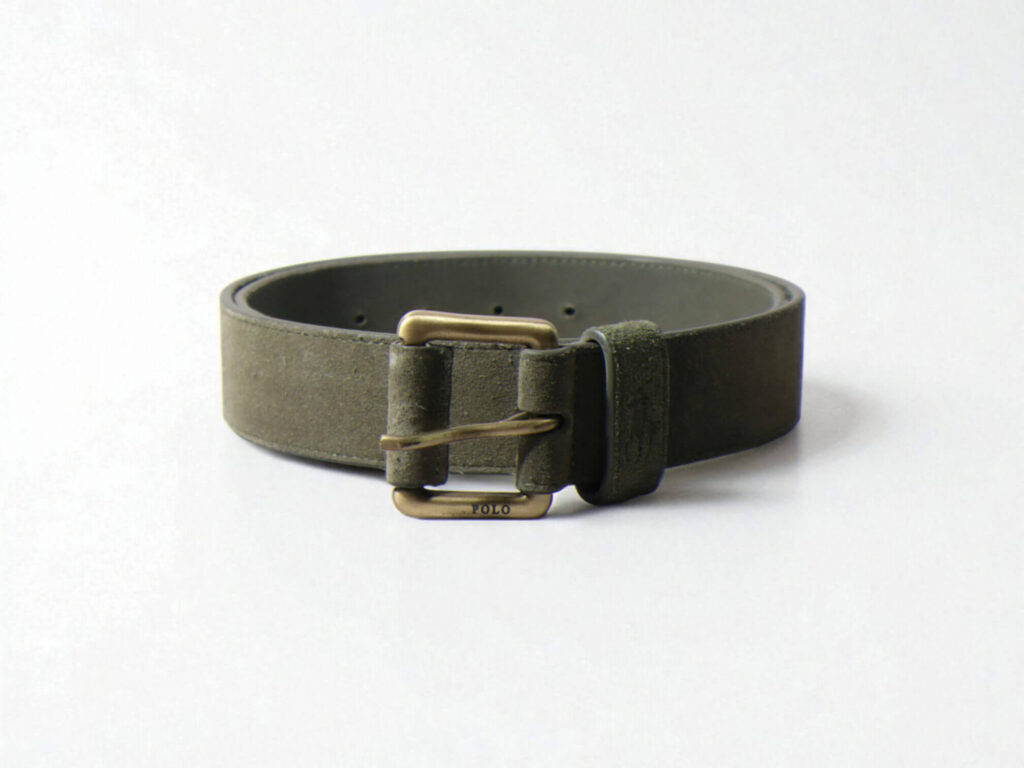
This is the belt you wear when you’re aiming for smart casual: a blazer with dark denim, a button-down with chinos, or any “I dressed up but not for a boardroom” look. Suede pairs beautifully with other textured fabrics like wool trousers, flannel shirts, or knit sweaters.
Recommended Pick: The Johnston & Murphy Suede Belt brings that premium texture without the premium price shock. Just remember to treat it right—suede rewards good care.
4. Canvas Belts
Canvas belts bring a rugged, military-inspired edge. They’re practically indestructible—made for beach trips and camping weekends.
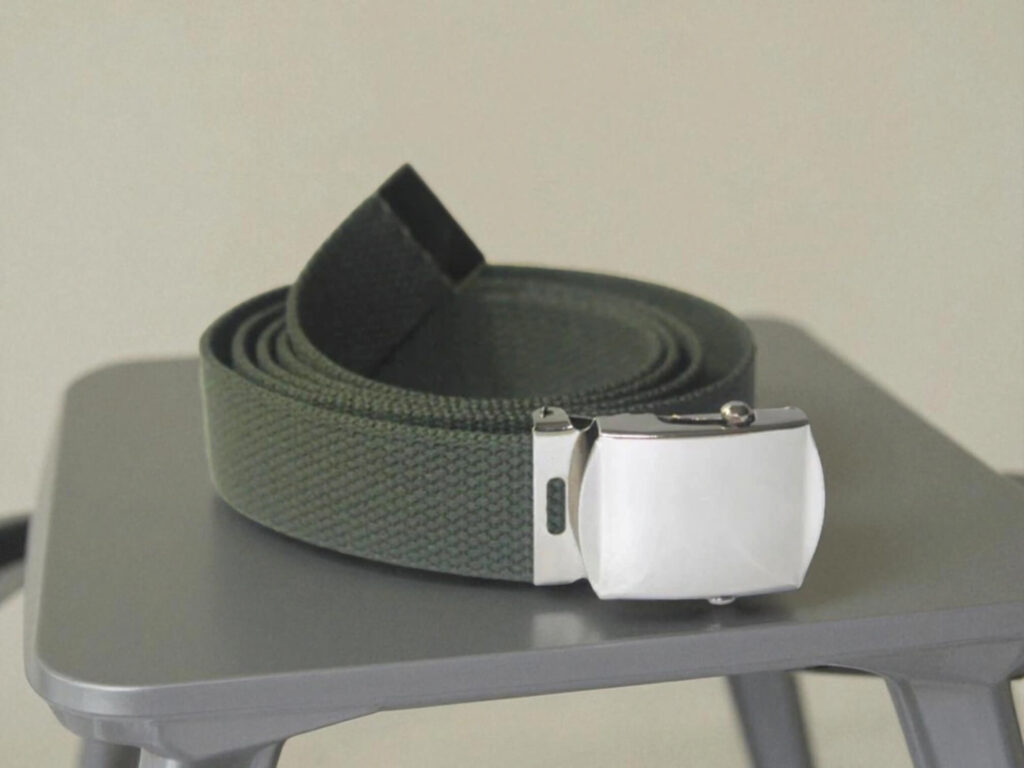
The beauty of the canvas belt is in the color game. Leather sticks to black, brown, and the occasional cognac. Canvas? It opens up a whole paintbox—olive green, navy, khaki, and even bold shades for those willing to step outside the safe zone. That flexibility lets you coordinate outfits in ways leather simply can’t.
The best canvas belts have that broken-in military surplus vibe—substantial webbing, no-nonsense hardware, and a sense that they could outlast your pickup. They shine with jeans, cargo shorts, and field jackets.
Recommended Pick: The Arcade Adventure Belt brings that tactical-meets-casual vibe perfectly. Durable webbing construction, low-profile buckle, and the kind of versatility that works whether you’re hiking trails or hitting the local brewery. Available in multiple colors to match your style.
5. Braided Belts
Braided belts sit in their own lane: a touch more character than plain leather, but not as laid-back as canvas. The woven texture adds quiet interest, lending itself well to preppy, nautical, and smart casual settings.
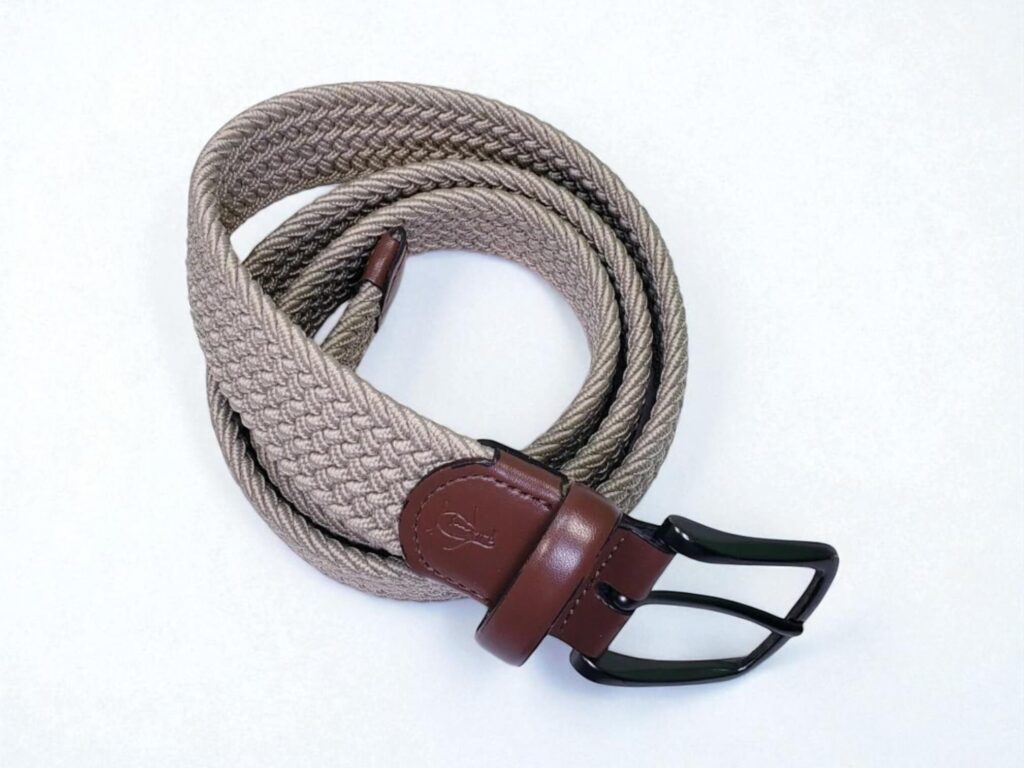
They come in leather, cotton, or synthetics, sometimes with multi-color braiding for visual punch. A classic brown-and-tan leather braid is practically summer uniform material—pair it with chinos, polo shirts, and loafers.
Just know their personality. Braided belts lean casual and playful, so don’t push them into strict formal territory. They’re built for warm-weather weekends, coastal strolls, or a relaxed night out.
Recommended Pick: The Torino Leather Braided Belt delivers that classic preppy aesthetic with genuine craftsmanship. Perfect for that effortless summer sophistication that never goes out of style.
6. Reversible Belts
Reversible belts used to scream “novelty,” but modern designs have made them genuinely practical. The good ones offer black leather on one side, brown on the other, with a buckle that flips to match.
For frequent travelers or minimalists, they’re a clever way to cover multiple dress codes with a single piece. One belt handles both your charcoal suit for meetings and your navy blazer for dinner.
Quality is non-negotiable. Cheap reversible belts look flimsy from both sides. A well-made one, though, gives you real versatility without sacrificing style.
Recommended Pick: The Perry Ellis Reversible Belt solves the two-belt problem elegantly. Quality leather on both sides, sturdy rotating buckle, and the kind of construction that doesn’t scream “gimmick.”
7. No-Hole Belts
Also known as ratchet belts, these swap the traditional pin-and-hole system for a hidden track mechanism. The result? Infinite adjustments and a perfect fit every time.
They’re ideal for guys who want precision sizing or who dislike the stretched, worn look that holes eventually get. From the outside, they mimic regular belts—no visible tracks or patterns—so they slip easily into both casual and formal outfits.
Just make sure the buckle isn’t oversized. You want the fit innovation, not a chunk of hardware stealing all the attention.
Recommended Pick: The SlideBelts Ratchet Belt mechanism is smooth and reliable, and the leather quality holds up to daily wear. Once you try the convenience, traditional belts feel archaic.
8. Western Belts
Western belts don’t do subtle. Tooled leather patterns, oversized buckles, and intricate metalwork—they step into a room and refuse to fade into the background. They’re less “accessory” and more “wearable heritage.”
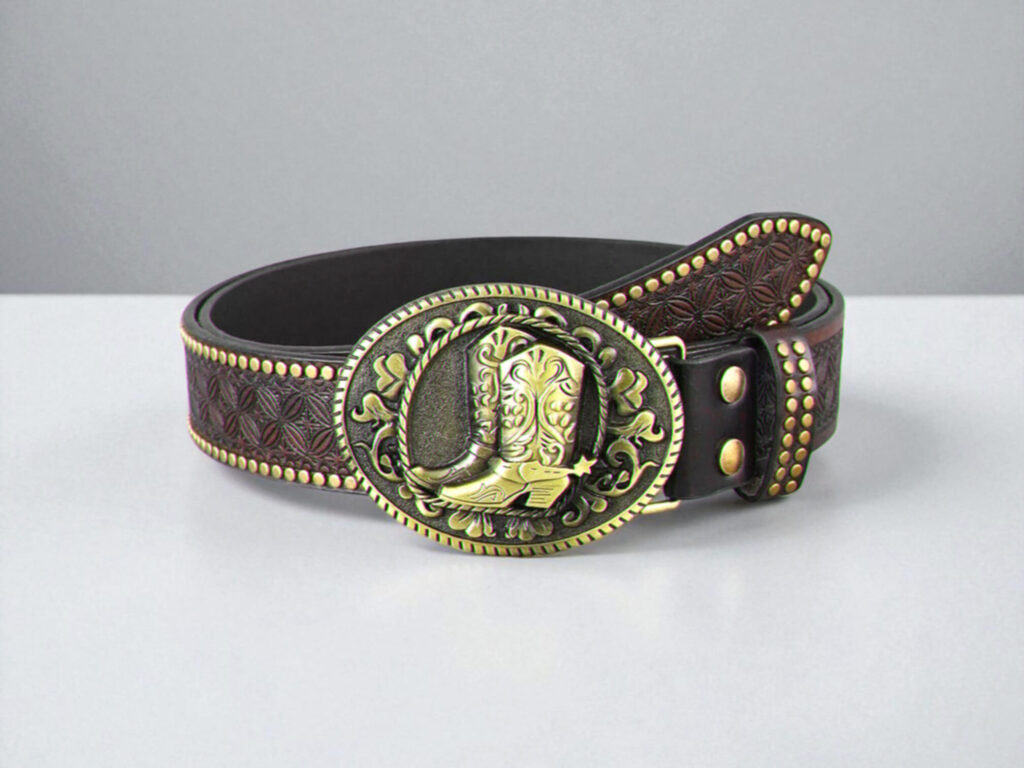
The secret to wearing one without looking like you’re headed to a costume contest? Confidence and the right setting. Dark denim, good boots, and a crisp button-down are their natural habitat. Keep the rest of your outfit simple so the belt takes the spotlight without fighting for it.
High-quality western belts are often handcrafted, each with patterns pressed or carved into the leather by skilled artisans. It’s slow, detailed work—a craft passed down through generations—that turns each belt into a small piece of history.
Recommended Pick: The Tony Lama Western Belt brings authentic cowboy craftsmanship. Perfect for guys who want to add some Western flair without going full rodeo.
How to Choose the Right Belt Type
The best belt for you isn’t necessarily the trendiest one—it’s the one that fits your actual life. If 80% of your wardrobe is jeans and T-shirts, a closet full of dress belts won’t magically turn you into a suit guy. And that western belt you saw on Instagram? If you’ll never actually wear it, it’s just expensive wall art.
Start with your wardrobe’s reality. If most of your outfits lean business casual, prioritize casual leather belts and a single high-quality dress belt. Outdoors every weekend? The Canvas belt should be on your radar. Buy for the life you live now, not the one you imagine for someday.
Formality matching is non-negotiable: a belt should never be drastically more formal—or more casual—than the rest of your outfit. A canvas belt with a suit? Nope. A glossy black dress belt with cargo shorts? Also nope.
Color coordination is easy to master: match your belt to your shoes as a baseline rule. Once you’ve got that down, you can experiment with complementary tones instead of strict matches.
Belt Width matters, too. Thin belts (around 1 inch) complement tailored, formal outfits. Medium widths (1.25–1.5 inches) handle everyday casual looks. Wider belts (1.75 inches or more) belong with rugged, heavy-duty outfits—or as a deliberate style statement.
And above all, choose quality over quantity. One well-made leather belt that lasts a decade beats five cheap ones that fall apart every other year. Invest in the belts you’ll actually wear, and they’ll pay you back in style and durability.
Frequently Asked Questions
1. How many belts should I actually own?
Start with three: one black dress belt, one brown dress belt, and one casual belt (probably brown leather). That covers about 80% of what most guys need. From there, add based on how you actually dress. If you live in jeans and casual clothes, maybe a canvas belt makes sense. If you’re always in business casual, perhaps a reversible belt for travel convenience.
2. What’s the deal with expensive belts? Is it worth spending $100+ on a belt?
Quality matters more with belts than almost any other accessory because they take real abuse. A cheap belt will crack, the leather will peel, and the buckle will break—usually within a year or two. A quality belt from a good brand can literally last decades.
The math is simple: spend $30 on a belt every two years, or spend $120 once for something that lasts ten years. Plus, good leather actually looks better as it ages, developing character and patina that cheap belts can’t match.
3. What’s the difference between full-grain and genuine leather belts?
Full-grain leather is the top layer of the hide with all the natural grain intact—it’s the highest quality leather you can get. It’s durable, ages beautifully, and develops that rich patina over time.
“Genuine leather” sounds official, but it’s actually lower quality. It’s made from leather scraps that have been ground up and reformed. It’s cheaper, but it doesn’t age well and tends to crack and peel within a year or two.
Always go for full-grain or top-grain leather if your budget allows.
4. Can I wear a dress belt with jeans?
You can, but it usually doesn’t look quite right. Dress belts are typically thinner and more refined, which can look out of place with the heavier, more casual nature of jeans. They work better with dress pants, chinos, or more tailored casual trousers.
For jeans, you’re usually better off with a casual leather belt that has more visual weight and substance to match the denim’s character.
5. Is it okay to wear a belt with no belt loops?
If your pants don’t have belt loops, skip the belt. Wearing a belt with pants that weren’t designed for one looks awkward and out of place. This includes most dress pants with side adjusters, many athletic pants, and some casual trousers designed for a clean, streamlined look.
